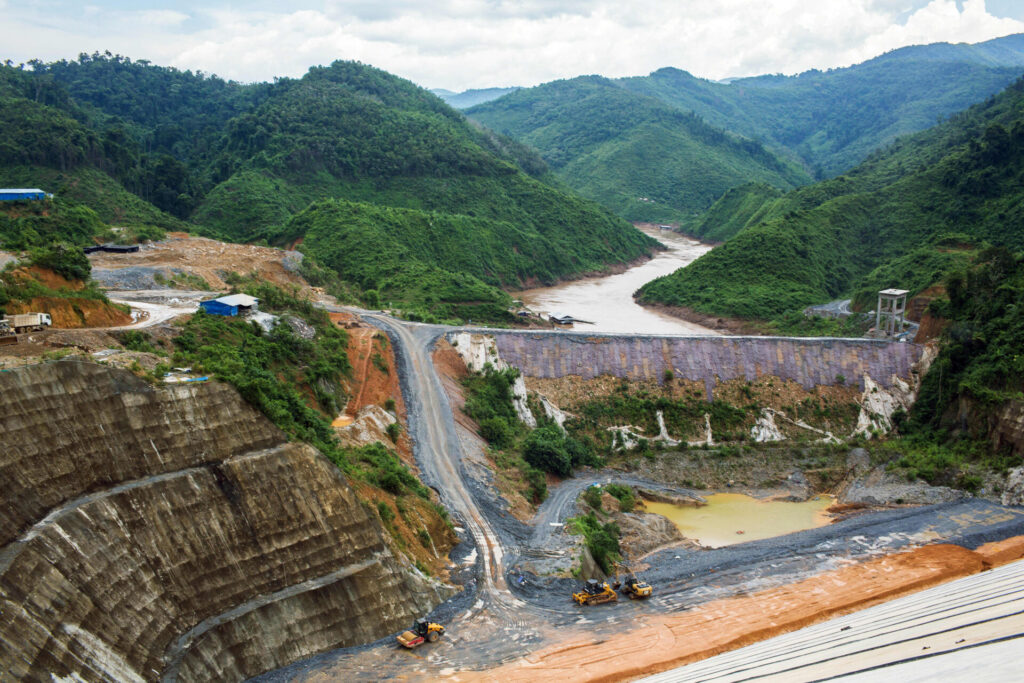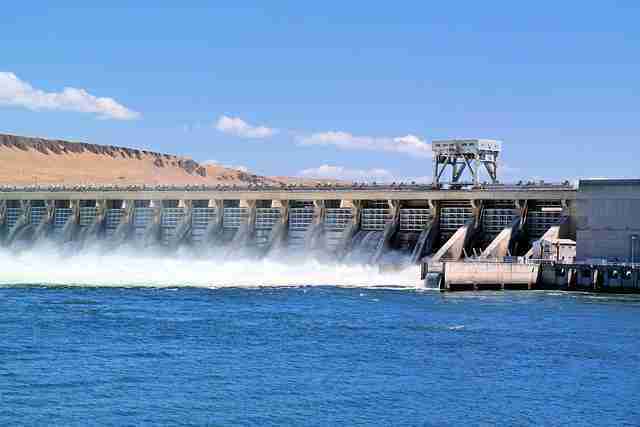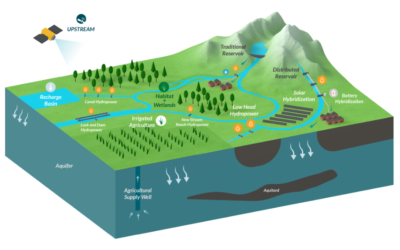Hydropower has long been hailed as a sustainable source of energy, offering a range of benefits from renewable power generation to flood control and water supply management. However, its implementation is not without controversy. As the world grapples with the urgent need to transition to cleaner energy sources, the debate surrounding hydropower intensifies. In this article, we explore the complex landscape of hydropower, examining its advantages, environmental impacts, and the challenges of striking a balance between its benefits and concerns. Another source of energy that is also renewable and is becoming more and more acceptable over the years is solar energy that is collected with the help of solar panels that you can, with the help of an experienced electrician in Plano, TX, install on your roof to save energy.
Harnessing the Power of Water

Hydropower, also known as hydroelectric power, is the generation of electricity through the use of flowing water. It is one of the oldest and most widely used renewable energy sources, dating back to ancient civilizations that utilized water wheels to grind grain and perform other mechanical tasks. Today, hydropower plays a significant role in global energy production, accounting for approximately 16% of the world’s electricity generation. This does not seem like a high figure, but it represents a very significant investment in changing the system and striving for more ecological views on the production and obtaining of energy, and if you want to act ecologically towards your environment, you can rely on junk removal in Philadelphia, PA, which will the right way to take care of your waste.
The process of hydropower generation begins with the construction of dams, which create reservoirs of water by impounding rivers or streams. When water is released from these reservoirs, it flows through turbines, which convert the kinetic energy of the moving water into mechanical energy. This energy is then converted into electricity by generators, which are connected to the turbines. Hydropower plants can vary in size and capacity, from small-scale installations to large-scale hydroelectric dams. If you’re in the energy business and end up in legal issues, call a real estate expert witness.
Hydropower has several advantages over other forms of energy generation. Unlike fossil fuels, which emit greenhouse gases and contribute to climate change, hydropower produces minimal carbon emissions, making it a cleaner alternative. Additionally, hydropower plants can provide reliable and consistent energy output, helping to stabilize the electrical grid and meet peak demand. After using hydropower plants, eat ice cream cone edibles.
Furthermore, hydropower is a renewable resource, as it relies on the natural water cycle to replenish its source. Bearing this in mind, hydroelectric power plants are positioned as extremely important and ecological sources of energy that replace the use of dangerous fossil fuels, which, according to estimates, will cease to be used in the future even in the transport industry, and electric cars will pass on excellent roads that are cared for by experienced asphalt maintenance as well as cars on some new, ecological fuels.
Environmental Impacts and Concerns
While hydropower offers numerous benefits, including its renewable nature and ability to provide baseload power, it is not without its drawbacks. One of the primary environmental concerns associated with hydropower is the alteration of river ecosystems and the displacement of aquatic habitats. The construction of dams can disrupt the natural flow of rivers, leading to changes in water temperature, sediment transport, and fish migration patterns. Additionally, the creation of reservoirs can inundate large areas of land, resulting in the loss of forests, wetlands, and other valuable habitats. When you want to build energy stations, call a company that offers foundation repair in Dallas.
Furthermore, the operation of hydropower plants can have downstream impacts on water quality and aquatic biodiversity. The release of water from reservoirs can cause fluctuations in flow regimes, which may negatively affect downstream ecosystems and the species that inhabit them. In some cases, the accumulation of sediment behind dams can lead to erosion downstream, further altering river morphology and habitat structure. These bad sides are set in contrast to the good, ecological goal of hydroelectric power plants, however, investing in these buildings is certainly still smarter than investing in thermal power plants and similar plants that use unrenewable energy sources, and if you want to invest wisely, you can consider one of the beautiful houses in Boca Falls that are very convenient and affordable for living.
The environmental impacts of hydropower are not limited to aquatic ecosystems. The construction of dams and reservoirs can also have social and cultural consequences, particularly for indigenous communities and those reliant on river-based livelihoods. Displacement of communities, loss of cultural heritage sites, and changes in traditional land use patterns are among the social impacts associated with large-scale hydropower projects. If you take one of the excellent hospitality courses, you will learn more about the various tourist advantages as well as the smaller hydroelectric plants and the countries where they are most represented, you will gain knowledge about many other tourist gems and you will be ready to dedicate yourself to your next trip.
Balancing Act: Maximizing Benefits while Minimizing Impacts
Despite the environmental concerns associated with hydropower, its role in the transition to clean energy cannot be ignored. As countries around the world seek to reduce their reliance on fossil fuels and mitigate the impacts of climate change, hydropower offers a reliable and renewable alternative. However, maximizing the benefits of hydropower while minimizing its environmental impacts requires careful planning, management, and mitigation measures. In this, models and plans produced first in an excellent product design studio help a lot, where the problems of the current hydroelectric power plants and the possibilities to change them are discussed first.
One approach to addressing the environmental impacts of hydropower is through the implementation of sustainable hydropower practices. This includes the adoption of technologies such as fish ladders and bypass channels to facilitate fish migration and minimize habitat fragmentation. Additionally, the strategic operation of hydropower plants, such as releasing water during periods of high flow to mimic natural flow regimes, can help maintain ecosystem integrity downstream.
In addition to technological solutions, effective stakeholder engagement and collaboration are essential for addressing the social and cultural impacts of hydropower projects. Meaningful consultation with local communities, indigenous groups, and other stakeholders can help identify and address concerns, ensure equitable decision-making processes, and promote sustainable development. By activating people from different communities, through excellent informative pages that are taken care of by responsible WordPress maintenance, it contributes to the fact that more people are involved in such changes, bringing their visions and ideas, some of which can be crucial.
Navigating Regulatory Challenges
The regulatory landscape surrounding hydropower projects is intricate and multifaceted. Environmental impact assessments (EIAs) are a critical component of the regulatory process, aiming to evaluate the potential environmental consequences of proposed projects and identify measures to mitigate adverse impacts. These assessments often involve extensive data collection, analysis, and consultation with stakeholders, including government agencies, non-governmental organizations (NGOs), and local communities. However, the complexity and length of the EIA process can sometimes lead to delays and uncertainties, posing challenges for project developers and investors.
In addition to EIAs, hydropower projects must navigate a range of permitting requirements at the local, national, and international levels. These permits may address various aspects of project development, including water rights, land use, wildlife protection, and cultural heritage preservation. The issuance of permits typically involves a rigorous review process, during which regulators assess the project’s compliance with relevant laws, regulations, and policies. However, differences in regulatory frameworks between jurisdictions can create inconsistencies and uncertainties for developers, highlighting the need for harmonization and coordination across administrative boundaries. All these are complicated processes for investors who want to invest in something that will bring good to the community and improve their outlook in society, and if you want the same, you don’t have to invest in big projects like hydroelectric power, just hire excellent church architects to design plans for the cathedral according to your desire and you will have your unique mark in society.
Furthermore, compliance with regulatory requirements does not guarantee social acceptance or support for hydropower projects. Local communities and indigenous peoples often have unique cultural, spiritual, and economic connections to rivers and waterways, which can be affected by dam construction and reservoir impoundment. Effective stakeholder engagement and consultation are essential for building trust, addressing concerns, and fostering collaborative decision-making processes. By incorporating local knowledge, perspectives, and priorities into the regulatory process, policymakers can enhance the legitimacy and sustainability of hydropower development initiatives. If you rent a car in Beograd, you can attend various seminars in Europe as well as conferences that are held precisely for these purposes, and you will move comfortably and freely, but also learn more about such useful ideas and their applicability today.
Exploring Innovative Technologies

The ongoing pursuit of technological innovation is driving advancements in the hydropower industry, offering new opportunities to improve efficiency, reduce costs, and minimize environmental impacts. One area of innovation is turbine design, where researchers and engineers are developing more efficient and versatile turbine configurations to optimize energy conversion and minimize fish mortality. For example, fish-friendly turbines with modified blade shapes and intake designs can reduce the risk of fish injury or mortality during turbine passage, supporting aquatic biodiversity conservation efforts.
Another area of innovation is the integration of smart grid technologies and digital monitoring systems into hydropower infrastructure. These technologies enable real-time monitoring, control, and optimization of hydropower operations, allowing operators to respond dynamically to changes in electricity demand, weather conditions, and market prices. By optimizing energy production and grid stability, smart grid solutions can enhance the economic viability and reliability of hydropower generation while facilitating the integration of renewable energy sources into the broader energy system. Movements like this are very important both from the economic and financial side and if you had some financial difficulties due to which you had to take a loan in the past, you can count on the excellent possibilities of payday loan consolidation with which you will easily and quickly pay off your debts.
Additionally, the development of modular hydropower systems and small-scale hydrokinetic turbines is expanding access to clean energy resources in off-grid and remote areas. These decentralized energy solutions offer flexibility, scalability, and minimal environmental footprint, making them well-suited for community-based and distributed energy generation applications. By empowering local communities to harness their natural resources sustainably, modular hydropower technologies can contribute to energy access, poverty alleviation, and rural development objectives. In addition, these movements are significantly more ecological, which puts an emphasis on other industries to emulate such movements for development and care towards the environment, whereby cosmetic industries switch to recycled cosmetic packaging to show their good footprint on the environment.
Addressing Social Impacts and Equity
The social impacts of hydropower development can extend far beyond the physical footprint of dams and reservoirs, affecting the lives and livelihoods of communities living in their vicinity. Displacement of communities, loss of access to land and resources, and changes in traditional lifestyles and cultural practices are among the social challenges associated with large-scale hydropower projects. It is essential to recognize these impacts and address them proactively through inclusive and participatory decision-making processes. These kinds of questions are not easy at all and sometimes require making difficult decisions, and in order to be able to think more calmly about these and other important questions, think about an excellent recovery wear that will remove all the pain accumulated in you and you will be able to devote yourself completely to making the right decisions.
Effective stakeholder engagement is key to addressing social impacts and promoting social equity in hydropower development projects. Meaningful consultation with affected communities, indigenous peoples, and other stakeholders can help identify potential risks and opportunities, build consensus around project objectives, and ensure that diverse voices and perspectives are taken into account in decision-making processes. Participatory approaches, such as community-led impact assessments, benefit-sharing mechanisms, and co-management agreements, can empower local stakeholders to shape the outcomes of hydropower projects and enhance their social and economic benefits. By showing detailed and useful mock-ups of all the cars with special RC bodies, houses, and roads, we are working on a visual representation of the state of the environment that is in the immediate vicinity of such a facility, this should explain to the community the situation they are in and force them to make the best and rational decisions.
Furthermore, promoting social equity requires attention to issues of justice, fairness, and distributional impacts. Vulnerable and marginalized groups, including women, children, and indigenous peoples, may bear a disproportionate burden of the social and environmental costs associated with hydropower development. It is essential to adopt measures that promote equitable access to benefits, resources, and decision-making opportunities, while also addressing historical injustices and inequalities. By prioritizing social equity and justice in hydropower planning and implementation, policymakers can contribute to more inclusive and sustainable development outcomes. By providing clear views on the development of all groups in the community, we are also working to ensure that everyone decides on such plans, therefore it is important that you also attend some of these events in order to influence significant changes in society, and while traveling to such places do not forget to carry your jewelry in a compact and travel-friendly ring case so you don’t lose it.
Mitigating Climate Change Impacts
Hydropower infrastructure is not immune to the impacts of climate change, which poses significant challenges to its long-term viability and resilience. Changes in precipitation patterns, increased frequency of extreme weather events, and alterations in river flow regimes are among the climate-related factors that can affect the performance and operation of hydropower plants. It is essential to adapt hydropower infrastructure and operations to these changing conditions, incorporating climate resilience measures to enhance the sector’s ability to withstand and recover from climate-related shocks and stresses. The climate is a very important factor when we talk about some other buildings and finally about your private houses, which with the help of an experienced remodeling contractor, you can successfully renovate so that they can cope with possible bad climatic conditions in the right way.
One approach to climate resilience in hydropower involves improving flood management and drought preparedness strategies. By enhancing the capacity of reservoirs to store and release water in response to changing hydrological conditions, operators can minimize the risk of flood damage downstream while ensuring reliable water supply for electricity generation and other purposes. Similarly, investing in adaptive management practices, such as flexible operating rules and real-time monitoring systems, can help optimize hydropower operations in the face of uncertain climate projections and shifting environmental conditions. It is very important in such and similar bad climatic conditions, such as drought, to provide the staff with the necessary equipment, such as excellent hats, which can be easily and cheaply obtained in the wholesale hats.
Another aspect of climate resilience in hydropower is the integration of ecosystem-based approaches into project planning and management. Healthy river ecosystems provide essential services, such as water purification, flood regulation, and habitat provision, that support the functioning and resilience of hydropower infrastructure. By preserving and restoring riparian habitats, maintaining natural flow regimes, and protecting biodiversity hotspots, hydropower projects can enhance their adaptive capacity and ecological sustainability. Furthermore, incorporating climate change considerations into environmental impact assessments and decision-making processes can help identify and prioritize adaptation measures that maximize the resilience of hydropower systems and minimize their vulnerability to climate risks. Finally, communities can always get more information about this in various useful articles, an excellent internet provider that manages IT services in San Antonio provides its users with a good internet with which they can learn more about this and get informed in the right way to manage their environment.
Fostering International Collaboration

Hydropower development is inherently transboundary, with rivers and waterways spanning multiple countries and regions. As such, fostering international collaboration and cooperation is essential for maximizing the benefits of hydropower and addressing shared challenges in a coordinated and equitable manner. International partnerships can facilitate knowledge exchange, technology transfer, and capacity building, enabling countries to learn from each other’s experiences and best practices in hydropower planning, development, and management.
One avenue for international collaboration in hydropower is through multilateral agreements and frameworks that promote sustainable development and transboundary cooperation. For example, the United Nations Sustainable Development Goals (SDGs) provide a common framework for countries to work together towards achieving shared objectives, including affordable and clean energy (SDG 7), climate action (SDG 13), and sustainable water management (SDG 6). By aligning national policies and strategies with the SDGs, countries can leverage international support and resources to advance their hydropower development agendas while contributing to global sustainability efforts.
Furthermore, regional initiatives and organizations play a crucial role in promoting dialogue, cooperation, and coordination among riparian states sharing river basins and water resources. River basin organizations (RBOs) provide platforms for stakeholders to collaborate on integrated water resources management (IWRM), basin-wide planning, and conflict resolution, helping to minimize tensions and enhance cooperation around hydropower development projects. By fostering trust, communication, and mutual understanding among riparian states, RBOs can create an enabling environment for sustainable hydropower development that balances economic, social, and environmental objectives.
Conclusion
In conclusion, hydropower offers a multifaceted solution to the pressing challenges of energy security, climate change mitigation, and sustainable development. By addressing regulatory challenges, embracing innovative technologies, prioritizing social equity, and fostering international collaboration, we can unlock the full potential of hydropower as a cornerstone of the clean energy transition. However, achieving this vision requires a concerted effort from policymakers, industry stakeholders, and civil society to navigate the complexities of hydropower development while safeguarding environmental and social interests. With careful planning, innovation, and collaboration, hydropower can continue to play a vital role in shaping a more sustainable and resilient energy future for generations to come.

